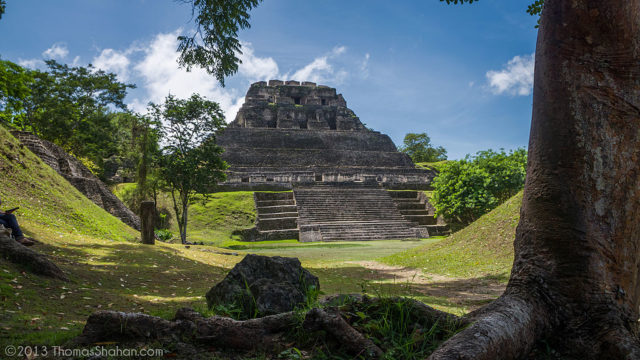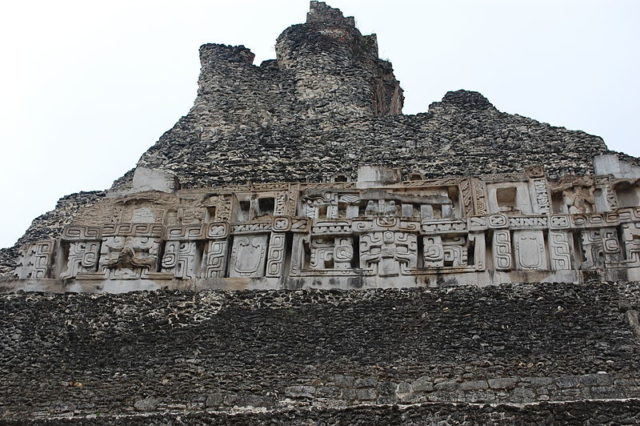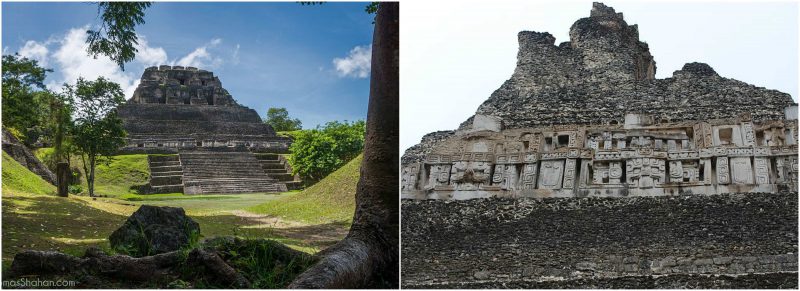For the first time, a royal tomb has been discovered at the Mayan site of Xunantunich in Belize, and located in the central stairway of the tomb are two hieroglyphic panels that tell the story of the civilization in the region.

Originally, the Mayan’s emerged from the Yucatan Peninsula, an area that is now southern Mexico and parts of Belize and Guatemala. The Mayan civilization is considered one of the most advanced of the pre-Colombian societies. Although it became fully established during the 3rd and 4th centuries BC, the height of its power was actual between 300 and 900 AD. Among other skills, the Mayans excelled at agriculture, science, arts, pottery, and architecture — in fact, the impressive temples at Xunantunich are a testament to their construction skills.
The recently discovered tomb is located at the heart of the site. Experts say that the person buried is an adult male, aged between twenty and thirty years old. He was also apparently quite muscular. In an interview with IBTimes UK, the lead researcher, Jaime Jose Awe said, “He was lying in an extended and supine position with his head to the south. Future analysis of the skeletal remains will allow us to confirm this age, and to determine the probable cause of death and other pathologies.”
The team found many artifacts, some of which were clearly offerings, including thirty-six ceramic vessels, a possible necklace with jade beads, thirteen obsidian blades, and the bones from jaguar and deer. Not only that, but the tomb is also one of the largest ever found in Belize. It measures 4.5 meters by 2.4 meters. What makes this tomb unique is that it was built at the same time as the temple that encloses it. According to Awe, “It appears that the temple was purposely erected for the primary purpose of enclosing the tomb. Except for a very few rare cases, this is not very typical in ancient Maya architecture.” With all this evidence, experts agree that the buried individual was someone of high social status, such as an important political figure.

The two hieroglyphic panels are captivating archaeologists and epigraphers. The panels are believed to be part of the hieroglyphic stair that was originally erected at the ancient Maya city of Caracol, located about 42 kilometers south of Xunantunich. The ruler of Caracol, Lord K’an II, is believed to have commissioned the stair to record the story of his victory over the site of Naranjo, located 15 kilometers west of Xunantunich.
When the ruler of Naranjo defeated Caracol a few decades later (in 680 AD), the hieroglyphic stair was dismantled and taken to Naranjo. There, the panels were reassembled in an incorrect order, with four segments missing. Awe explains, “Epigraphers suggest the panels were purposely reassembled out of syntax in an effort to ensure that it would not be legible, and make no sense.”
One of the missing segments was found in an excavation at the site of Ucanal, and another was found at Caracol. The two at Xunantunich are believed to be the ones that start and end the narrative recorded on the hieroglyphic stair, causing much excitement for experts.
Dr. Christophe Helmke is one of the project members working on the analysis of the hieroglyphic panels. He is one of many who suggest that the panels were commissioned by Lord K’an II in 642 AD. Interestingly, the panels also record the death of Caracol’s ruler mother, Lady Batz’Ek’. As supported by the titles she holds, experts believe that she might have come from Yaxha, now called Guatemala. She married the ruler of Caracol as part of a marriage alliance.
Furthermore, a previously unknown ruler from the site of Calakmul (present-day state of Campeche, Mexico) has been identified in the narrative of the hieroglyphs. The final section of the narrative was used to record the founding of the Snake-Head dynasty at Calakmul, from where these kings would dominate much of lowland Maya politics during the Late Classic period (c. 550 AD to 900 AD). In short, the panels shed a new light on the leaders, alliances, battles, and power dynamics between Mayan cities.
